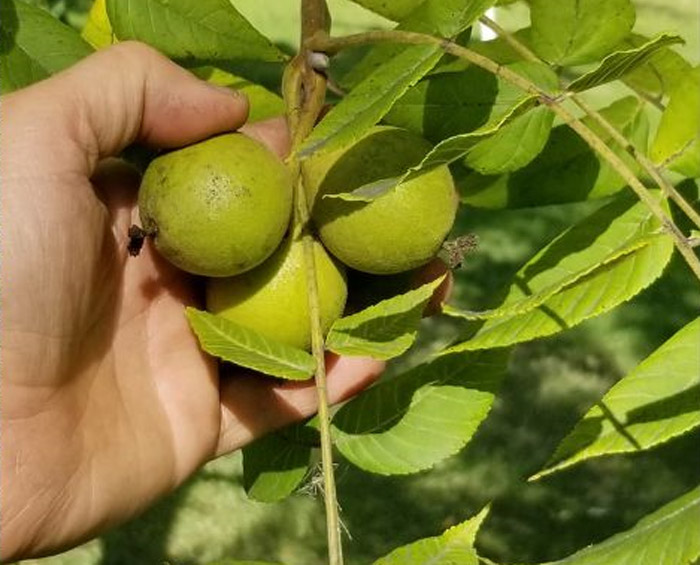Deeply Rooted
Black Walnut

I remember walking around my dad’s nursery when I was a teenager, helping out and getting distracted at the same time when I spotted a tree I had seen there before but had never really seen it for what it was. Black Walnut. “Really?” I thought. “Walnuts? Here?”
These walnuts are not native to Manitoba, but they are found just around the corner in northern mid-Minnesota and southern Ontario. While it is commonly said that the White Walnut, AKA Butternut, is the most cold hardy walnut breed, we have been seeing the Black Walnut pulling ahead in our production and in the field. We have been selecting our seed source from trees that have shown impressive cold tolerance and winter survival. They are not nearly ready to face the bald prairie, but for your typical in town yard or farmyard with surrounding shelterbelt, it has a good chance. There are rumours that the Manchurian Walnut could do even better but that is a talk for another time after some more research and testing is done.
Black Walnut was named for the charcoal grey streaks that run down the trunk giving it a much darker look than its White Walnut cousin. I like the Black Walnut for its impressive compound leaf, similar to an Ash tree leaf which can have between 5 to 9 leaflets to each leaf. The Black Walnut however can have up to 23 leaflets! This means that a single leaf can be over two feet long!
The nuts themselves are smaller and their shells are tougher than the European varieties you get in the store, but they are absolutely edible. They are almost perfectly round when they are still covered in their protective green flesh, but inside of that they do have a very distinct walnut look to them.
A Black Walnut will grow between 1-2′ in a good year, eventually arriving at 50′ tall and nearly as wide with an upright Elm like shape making them fantastic shade trees for the yard.
However! You should know that the Black Walnut has a dark secret. They produce a toxin known as juglone in many parts of the tree, the roots in particular. Some plants are tolerant of it, but many varieties of vegetables can suffer and die if planted too close by! It is a behaviour observed in all walnuts and their relatives, but the Black Walnut is best known for it. It works as a natural self-defence, particularly to protect the nuts from insects, and to eliminate competition growing close by. This tree has its own all-natural insecticide and herbicide!
So, a word of advice for the future: the Black Walnut needs to stay away from the garden. Best to keep them out of the flower gardens and shrub beds too. It is a beautiful tree for the back corner of the yard where it is sheltered from the wind and has some… uh… mandatory elbow room.
The nuts themselves are perfectly safe to eat once they are properly prepared but if you find yourself craving to gnaw on some Black Walnut roots, well, now you know better.




